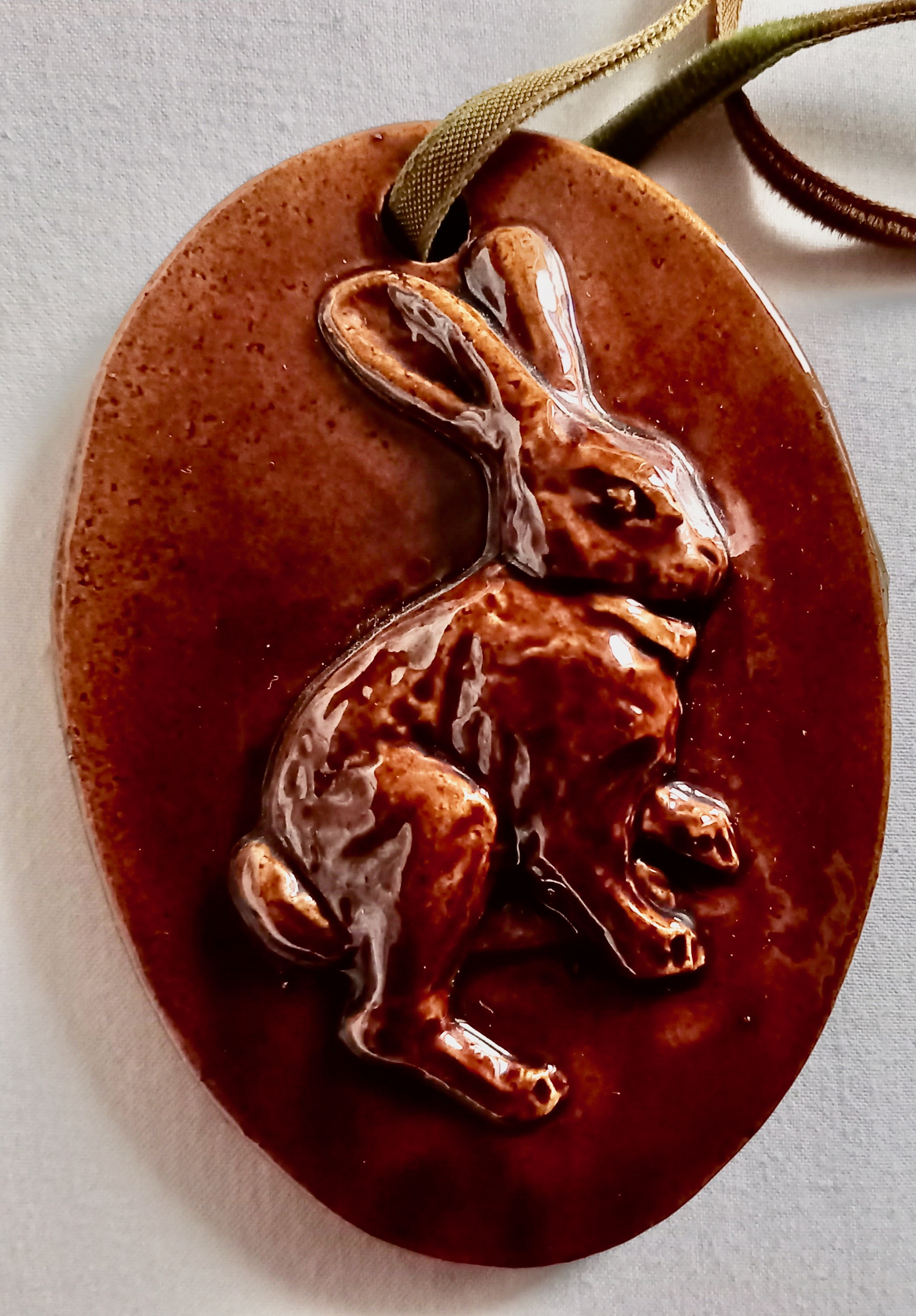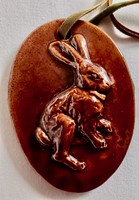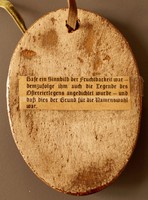Bunny
The fertile Easter bunny
Some of our objects came from flea markets, where, at times, they coulda only be identified with the shrewdness of a detective. One irrigator, for example, was sold as a “pepper mill”. Wooden benches and stools likewise only revealed their inner workings to the informed eye, for they were bidets, serving as vaginal douche (French bidet, Bidet table).
It was different with the clay rabbit, which already revealed its purpose on its back: “The rabbit was a symbol of fertility – accordingly, it was also imputed with the legend of laying Easter eggs – and this was the reason for the choice of name.” Probably our object is a votive offering seeking, or seeking to avoid, being blessed with (too many) children, but we can only speculate.
One wonders why the Easter bunny does actually represent a fertility symbol. We can find answers in biology, for one thing: rabbits and hares belong to the Leporidae family of mammals, which consists of eleven genera and roughly 55 species. Rabbits get going with the production of their offspring very early on in the year and can have (up to 5) young four times a year. This high frequency is possible because the female rabbit is simultaneously pregnant with foetuses of various ages.
The ARD show Planet-wissen.de elucidates us about the connection between rabbits and Easter eggs: “Their behaviour in open meadows made them the favourites for hiding eggs. The eastern jackrabbit (the brown hare) remains silent in a hollow before hopping away at the last minute when in danger. The place where the hares lay was interpreted as an egg-laying spot.”
Rabbits, and hares, thus seem to have a close connection with eggs. The egg, in turn, has been a symbol of fertility, rebirth and new life since ancient times, and in many cultures.
To get more answers, we turn to the sphere of folk beliefs, mythology and religion. The rabbit and the hare have often been associated with lunar deities and embody rebirth and resurrection. They also play a role as attributes of Aphrodite and Venus, making them a symbol of carnal love. The Christian process of salvation does not view them quite so positively, but, rather, understands them as a symbol of unbridled sexuality and lust. In order for the animal’s libidinous nature to not be transferred to humans, the Catholic pope Zachary in 751 forbade his faithful to consume any rabbit meat.
We do not want to spoil your appetite, though, and, so, we wish you a successful Easter egg hunt! Enjoy your Easter bunnies, whether they’re made of chocolate, marzipan or even rabbit meat.


